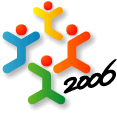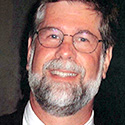

Integrating three concepts: Universal Design, Accessible Design, Inclusive Design
Roger Whitehouse
Principal, Whitehouse & Company : USA
What are the boundaries of what we call Universal Design, and how can we now best define what we do to achieve the goals of responding to the widest audience most effectively.
This presentation examines some projects which demonstrate the principles of Universal Design, Accessible Design, and Inclusive Design in the context of both printed and environmental graphic design, demonstrated through case histories including:
A Wayfinding and information system at The LIghthouse International in New York, whose users include not only individuals who are blind or visually impaired, but also those with mobility and cognitive impairments. This project was the result of exhaustive testing and design feedback from users, and includes tactile maps, talking signs, and a specially designed tactile typeface Printed materials to make medical care accessible to a wide range of low income and ethnically diverse immigrants in New York.
A Mural and other designs for a children’s museum which provide a psychological bridge for a community that does not normally relate to the museum experience.
A wayfinding system for a Children’s Hospital investigating language independent communications, and the development of a new experimental tactile typeface for blind users.

Accessible Media for All: Everywhere, Any Time, Any Device
Larry Goldberg
Media Access Group, WGBH Educational Foundation : USA
Television, home video and DVDs are traditional forms of media that have long provided closed captions for deaf and hard-of-hearing audiences and video description for blind and visually impaired audiences. Digital technologies now make media available everywhere via a variety of platforms and devices and captions and descriptions are technically possible for all of these venues.
Barriers and solutions for a wide variety of media will be discussed and demonstrated at this keynote session, including broadband media on the web, web conferences, handheld devices (including iPods, cell phones and PDAs), in-flight entertainment, movie theaters and more.
A wide variety of standards and media types will be shown and discussed including QuickTime, Windows Media, RealMedia, and Flash. Tools for creating or repurposing captions and descriptions will be presented and the movement toward a universal timed-text standard for multimedia will also be discussed.
The effect of media and technology regulatory policies in the United States and elsewhere will be included in this session, concluding with a view of the future of accessible media.
